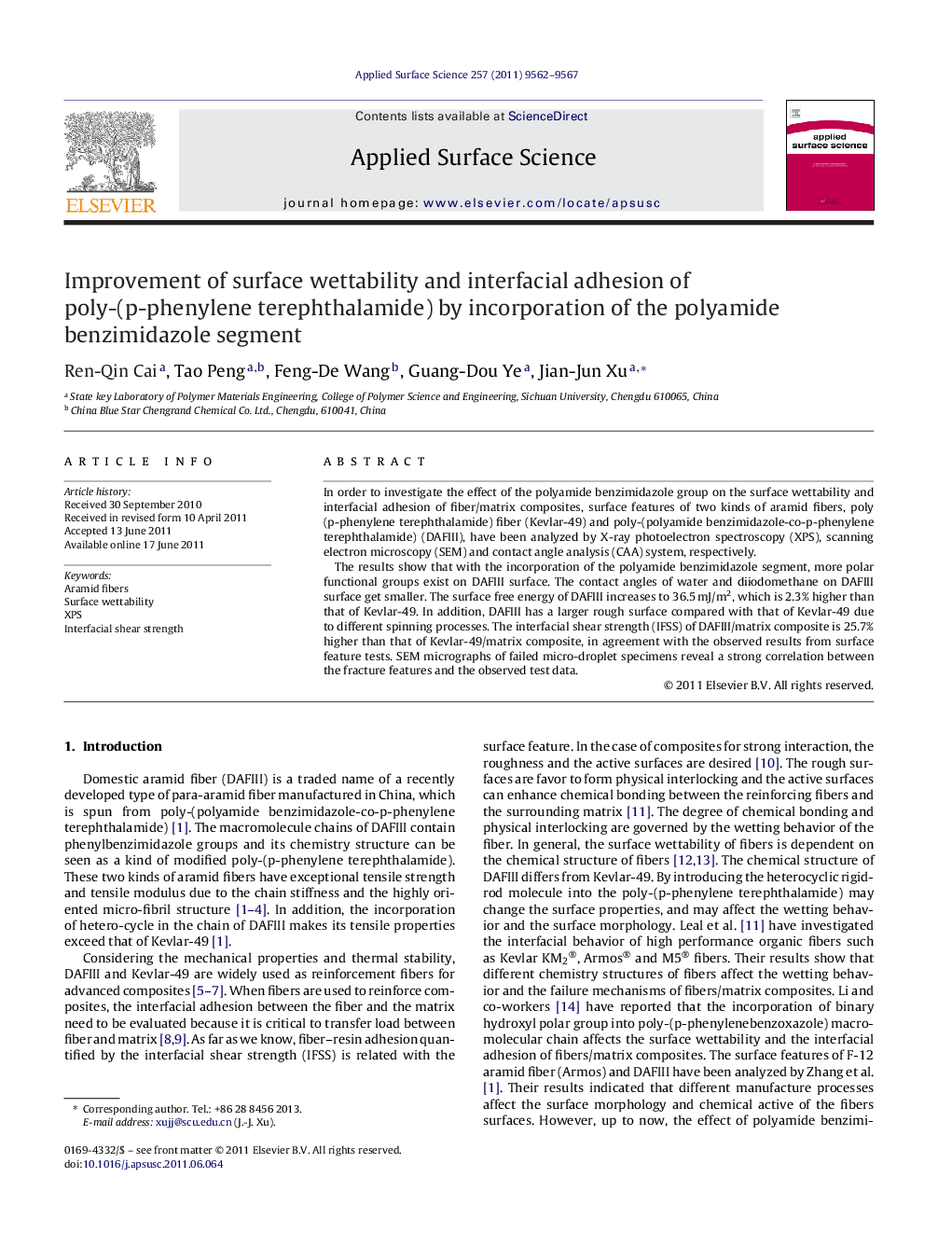| Article ID | Journal | Published Year | Pages | File Type |
|---|---|---|---|---|
| 5363377 | Applied Surface Science | 2011 | 6 Pages |
In order to investigate the effect of the polyamide benzimidazole group on the surface wettability and interfacial adhesion of fiber/matrix composites, surface features of two kinds of aramid fibers, poly (p-phenylene terephthalamide) fiber (Kevlar-49) and poly-(polyamide benzimidazole-co-p-phenylene terephthalamide) (DAFIII), have been analyzed by X-ray photoelectron spectroscopy (XPS), scanning electron microscopy (SEM) and contact angle analysis (CAA) system, respectively.The results show that with the incorporation of the polyamide benzimidazole segment, more polar functional groups exist on DAFIII surface. The contact angles of water and diiodomethane on DAFIII surface get smaller. The surface free energy of DAFIII increases to 36.5Â mJ/m2, which is 2.3% higher than that of Kevlar-49. In addition, DAFIII has a larger rough surface compared with that of Kevlar-49 due to different spinning processes. The interfacial shear strength (IFSS) of DAFIII/matrix composite is 25.7% higher than that of Kevlar-49/matrix composite, in agreement with the observed results from surface feature tests. SEM micrographs of failed micro-droplet specimens reveal a strong correlation between the fracture features and the observed test data.
⺠The surface features of Kevlar-49 fiber and DAFIII and their effect on the fiber/matrix inter-phase adhesion, which are rarely reported in the literature. ⺠The surface of DAFIII has more polar functional groups contents, larger roughness and higher surface free energy than that of Kevlar-49 fiber. ⺠The interfacial shear strength (IFSS) of DAFIII/matrix composite is 25.7% higher than that of Kevlar-49/matrix composite. ⺠The surface feature play an important role in bonding and mechanical interlocking of the fiber and matrix.
